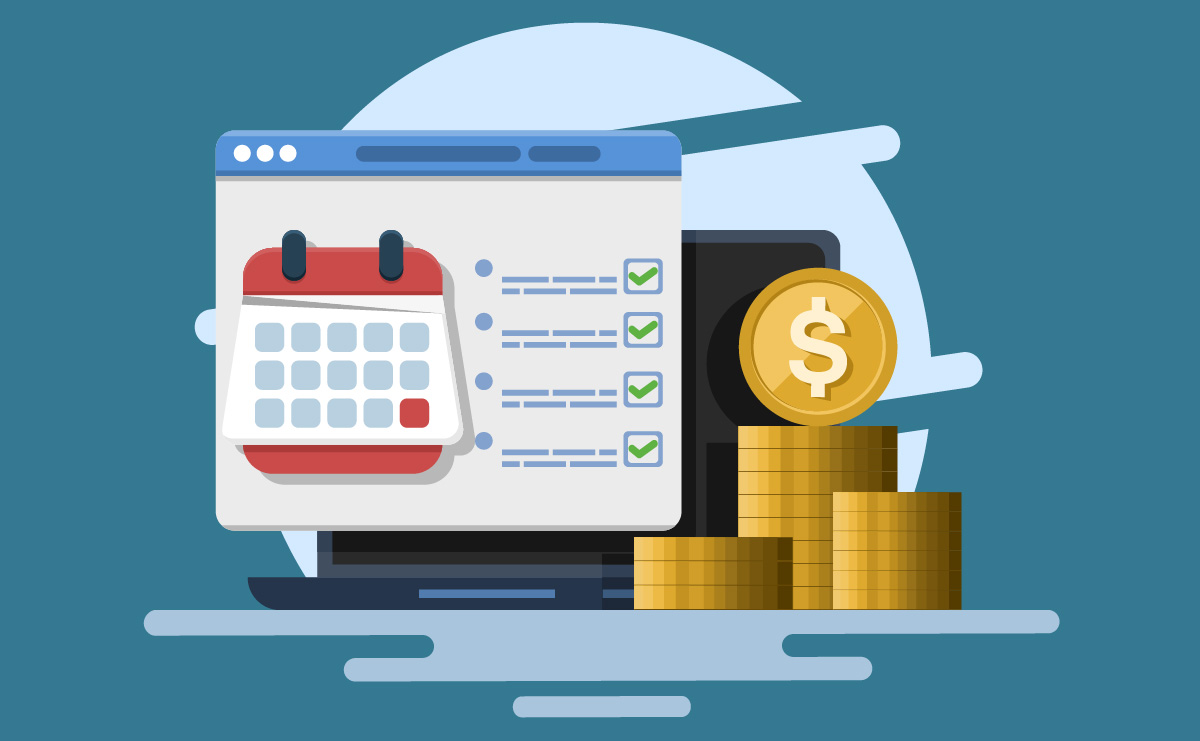Contents
A Guide to Payment Plans for Lawyers
In the legal field, cost is often a major concern for clients, making them hesitant to seek legal help. By offering payment plans, you can make your services more affordable and accessible, while also attracting and retaining more clients. Many firms now offer flexible payment plans lawyers can use to make their services more accessible to clients with financial constraints. Here is how you can set up effective payment plans in your law firm.
Why Do Lawyers Offer Payment Plans?
Payment plans can help bridge the gap between a client’s legal needs and financial abilities. By spreading payments over time, clients can manage legal fees more comfortably, and lawyers can ensure consistent cash flow. Attorneys have payment plans for several reasons, primarily to make legal services more accessible to clients. Here are key reasons why they do so:
Affordability for Clients: Legal services can be expensive, especially for complex cases. Payment plans help clients who can afford a large upfront fee by spreading the cost over time. To help make legal services more manageable for clients, law firms accept payment plans that break down the cost into smaller, more convenient payments.
Attracting More Clients: Offering flexible payment options can attract a broader range of clients, including those who would otherwise avoid seeking legal assistance due to cost concerns.
Reducing Financial Barriers: Lawyers can help clients avoid financial strain by providing payment plans, enabling them to pursue legal representation without compromising their financial stability. Law firms must be open to accepting payment plans that work within their clients’ financial means.
Improving Cash Flow for Law Firms: Payment plans lawyers provide can help reduce financial barriers for clients while ensuring consistent cash flow for the firm. Payment plans ensure that lawyers receive steady, ongoing income rather than waiting for one large payment. This can help law firms manage their cash flow more effectively.
Offering payment plans is not just about financial flexibility. It is also a way to build trust and foster stronger client relationships. It shows that you are willing to work with clients in financial difficulty.
Increasing the Likelihood of Payment: Clients who pay over time are more likely to fulfill their financial obligations, reducing the likelihood of non-payment or late payments.
Offering payment plans can give law firms a competitive edge in a crowded legal market. It is an additional incentive for clients to choose your services over others. Payment plans are a win-win solution for both clients and lawyers. They make legal services more accessible for clients, while also providing a stable financial structure for law firms.

Common Types of Lawyers Payment Plans
Lawyers offer different payment plans based on the type of case and the client’s financial needs. As law firms commit to helping their clients, they take payment plans to accommodate their different financial situations. Here are some of the most common payment plans lawyers use:
Hourly Billing
Lawyers who charge a fixed hourly rate bill clients based on their time working on their cases. This payment model is commonly used in litigation, consultations, and ongoing legal matters, allowing for the lawyer’s workload to be flexible. One of the advantages of hourly billing is that it provides transparent billing, as clients are charged for the actual work done. However, a significant drawback is that costs can accumulate quickly, making it difficult for clients to predict the total expense.
Flat Fee
In a flat fee payment model, a set price is charged for specific legal services, regardless of how much time the lawyer spends on the case. This approach is ideal for routine legal work, such as drafting wills, business incorporation, or handling uncontested divorces. The main benefit for clients is the secure predictability of costs, as they know upfront what they will pay. However, a potential downside is that lawyers may limit the amount of time they spend on the case to maintain profitability.
Contingency Fee
In a contingency fee arrangement, the lawyer is paid a percentage, typically between 25% and 40%, of the settlement or award if the case is successful. If the client loses, the lawyer does not receive any payment. This payment model is commonly used in personal injury, workers’ compensation, and other types of litigation where a financial settlement is expected. The primary benefit for clients is the relief of no upfront costs, and it incentivizes the lawyer to work hard for a favorable outcome. However, the downside is that the lawyer may take a significant portion of the settlement, and this arrangement is not suitable for all types of legal cases.
Retainer Fee
In a retainer fee arrangement, clients pay an upfront fee to secure the lawyer’s services, and the lawyer then bills against this retainer at an hourly rate. This payment model is commonly used for ongoing legal services, such as business consulting or family law matters. One advantage is that it ensures the lawyer’s availability for the client when needed. However, a potential drawback is that the retainer may not cover the entire cost of the legal work, requiring additional payments as the case progresses.
Subscription Fee
In a subscription fee arrangement, clients pay a recurring monthly or annual fee in exchange for ongoing legal services. This model works well for small businesses or individuals who require regular legal advice but do not need full-time representation. The primary benefit is the predictability of costs, giving clients access to legal assistance when needed without worrying about fluctuating fees. However, this model may not be cost-effective if the client’s legal needs are minimal, as they may end up paying for services they do not frequently use.
Sliding Scale Fee
In a sliding scale fee arrangement, fees are adjusted based on the client’s ability to pay, making legal services more accessible to lower-income clients. This payment model is often used in legal aid, family law, or civil rights cases. Its main advantage is that it offers an affordable option for clients facing financial constraints. However, a drawback is that lawyers may earn less than they would through traditional payment structures, potentially impacting their profitability.
Success Fee
In a success fee arrangement, the lawyer charges a lower hourly or flat rate upfront and adds a fee if they win the case or achieve a favorable outcome. This model is typically used in high-stakes litigation or cases where the outcome is uncertain. It motivates lawyers to work hard for a positive result while providing some upfront payment. However, a potential drawback is that clients may face significant fees at the end of a successful case.
Unbundled Legal Services
In an unbundled legal services arrangement, the lawyer provides limited assistance, such as document review or legal advice, for a flat fee rather than taking on the entire case. This model is ideal for clients who want to manage parts of their cases independently but require professional help with specific legal tasks. The key benefit is a lower cost for clients, as they only pay for their needed services. However, a potential drawback is that clients may need legal support to handle the aspects of the case they manage.
Pro Bono Services
Pro bono legal services are free, typically for clients who cannot afford to pay for legal representation. This type of service is best suited for low-income individuals or those needing public interest representation. The primary benefit is that clients receive legal assistance at no cost. However, pro bono services are limited, and not all cases may qualify for this type of legal support.
These payment plans allow law firms to cater to different clients’ financial situations while ensuring they receive the legal assistance they need.
How to Set Up Payment Plans at Your Law Firms
Setting up payment plans at your law firm can boost client satisfaction and help maintain a steady cash flow. To make things easier for your clients, law firms take payment plans so they can receive the legal support they need without paying everything upfront.
Understand Client Needs
Before offering payment plans, assess whether your clients would benefit from flexible payment options. During the initial consultation, speak with clients to gauge their financial situation and payment preferences.
Establish Clear Payment Terms
Define the total cost of legal services and outline the breakdown of payments. This should include the payment frequency (e.g., weekly, bi-weekly, or monthly), the due dates, and the method of payment (credit card, bank transfer, etc.).
Create a Formal Agreement
Draft a formal payment plan agreement that both the client and the law firm sign. This agreement should include the total amount owed, the payment schedule, any applicable interest rates or late fees, and the consequences of missed payments.
Use Legal Billing Software
By implementing billing software, you can streamline your payment processes, track overdue balances, and send client reminders. Many tools, like RunSensible, offer features for setting up recurring payments, tracking expenses, and offering clients multiple payment options, making your payment management more efficient and resourceful.
Offer Multiple Payment Options
Provide flexible payment methods like credit cards, ACH transfers, or online payment portals. Make it easy for clients to set up automatic payments to avoid missed payments.
Consider Retainer Fees with Payment Plans
Some law firms combine retainer fees with payment plans, allowing clients to pay an upfront amount and spread the remaining balance over time. This can help you secure an initial commitment while giving clients the necessary flexibility.
Monitor Payments
Stay on top of payment schedules by regularly reviewing payment plan status. Automated software like RunSensible can help alert you when payments are missed, giving you the chance to intervene early before issues escalate.
Evaluate the Need for Interest or Late Fees
Decide if you will charge interest on outstanding balances or apply late fees to encourage timely payments. Be transparent about these charges in the initial agreement.
Review and Adjust Periodically
Payment plans should be reviewed periodically to ensure they work for the law firm and the client. If needed, adjustments should be made based on the client’s ability to pay or the firm’s cash flow requirements.
How to Communicate Payment Plan Options to Your Clients
When law firms offer payment plan options, effective communication is critical to ensuring clients fully understand the terms, benefits, and responsibilities associated with the arrangement.
Start Early in the Process
Discuss payment plan options during the initial consultation. By addressing it early on, you can build trust and manage expectations. Let clients know your firm is flexible and willing to accommodate their financial situation.
Be Clear and Transparent
Explain the payment plan terms in simple language. Break down the total cost, the monthly payment amounts, and the plan’s duration. Avoid legal jargon that could confuse clients.
Highlight the Benefits
Emphasize how the payment plan benefits the client by making legal services more affordable and manageable. It enables them to proceed with their case before they can pay in full.
Set Clear Expectations
Make sure clients understand their obligations under the payment plan. Outline what happens if a missed payment and how it could affect their case. It is vital to cover any late fees or penalties and any legal actions the firm might take if payments are not made.
Put It in Writing
Always provide written documentation of the payment plan agreement. This should outline all terms, including due dates, payment methods, and any repercussions for non-payment. Ensure the client signs the agreement before the plan starts.
Offer Flexible Payment Methods
Give clients payment options like credit cards, bank transfers, or online payment platforms. Make the process as convenient as possible to encourage timely payments.
Regularly Communicate and Follow-Up
Stay in touch with clients during the payment period. Send reminders ahead of due dates and be open to discussions if clients are experiencing difficulties in making payments. Clear communication can help prevent misunderstandings and ensure the payment plan is adhered to.
Be Compassionate and Understanding
Clients may be facing financial difficulties, which is often why they need a payment plan in the first place. Approach the conversation with empathy, showing that you are there to work with them rather than against them.
Legal Considerations for Payment Plan Contracts
Law firms must draft contracts that clearly outline the terms and conditions to protect both the firm and the client when offering payment plans. Here are some key legal considerations when creating payment plan contracts:
Late Payment and Default Clauses
The payment plan contract should address what happens if a client misses a payment or defaults. This includes specifying whether a grace period is allowed and its duration, detailing any penalties for late payments and outlining the legal remedies available to the firm, such as the right to terminate services, withhold documents, or pursue collection actions. These clauses are essential to protect the law firm from financial loss due to non-payment.
Right to Terminate Services
Include a clause outlining the law firm’s right to stop providing services if payments are not made on time. This clause can also outline when services may resume if the client catches up on missed payments.
Confidentiality and Privilege
Ensure that the payment plan agreement includes a clause reaffirming attorney-client confidentiality. While the financial agreement is separate from the legal services, it should clarify that any disclosures related to payment will not affect the attorney-client privilege.
Dispute Resolution Clause
The payment plan contract should include a clause specifying how disputes will be handled, encouraging alternative dispute resolution methods such as mediation or arbitration before litigation. In addition, it should identify the court or jurisdiction that will handle any disputes that escalate to legal action, ensuring clarity on where such matters will be resolved.
Compliance with Consumer Protection Laws
Ensure compliance with relevant consumer protection laws if your payment plan includes interest or financing charges. Understanding state and federal regulations is crucial, particularly if your payment plan resembles a credit agreement. Ensuring that your payment plan is transparent and fully compliant protects your law firm legally, builds trust, and maintains ethical standards with your clients.
Force Majeure Clause
A force majeure clause can protect both the law firm and the client in case of unexpected events that make it impossible for either party to meet the contract’s terms. This could include natural disasters, pandemics, or other unforeseen circumstances.
Governing Law
Specify which state or country’s laws will govern the payment plan agreement. This is especially important for firms with clients in multiple jurisdictions.
Setting Up Payment Plans for Lawyers Using RunSensible
RunSensible simplifies legal billing by offering customizable payment plans for law firms, allowing clients to pay in manageable installments. It automates invoicing and sends payment reminders, offering multiple payment options such as credit cards and bank transfers. The platform provides real-time tracking of payments and outstanding balances, helping firms stay on top of their finances. Clients can access payment schedules and balances via a secure portal, enhancing communication and transparency. The payment plans are also integrated with case management, ensuring seamless financial tracking and case progress in one system.
Final Thoughts
Offering payment plans in your law firm can be a game-changer for both your business and your clients. By providing flexible payment options, you are making legal services more affordable and accessible, which can help attract new clients and keep current ones happy. For clients, it eases the financial burden of large upfront costs, while for your firm, it ensures a steady cash flow and reduces the risk of non-payment. Indeed, many firms are implementing payment plans lawyers can customize based on the type of case and the client’s financial situation.
Setting up these plans with clear terms and open communication builds trust and shows you are willing to work with clients during tough financial times. Plus, with a well-drafted payment plan agreement in place, you can protect both your firm and your clients legally. In the end, payment plans are a win-win – they help clients get the legal help they need and position your firm as flexible, compassionate, and business-savvy.
Disclaimer: The content provided on this blog is for informational purposes only and does not constitute legal, financial, or professional advice.







